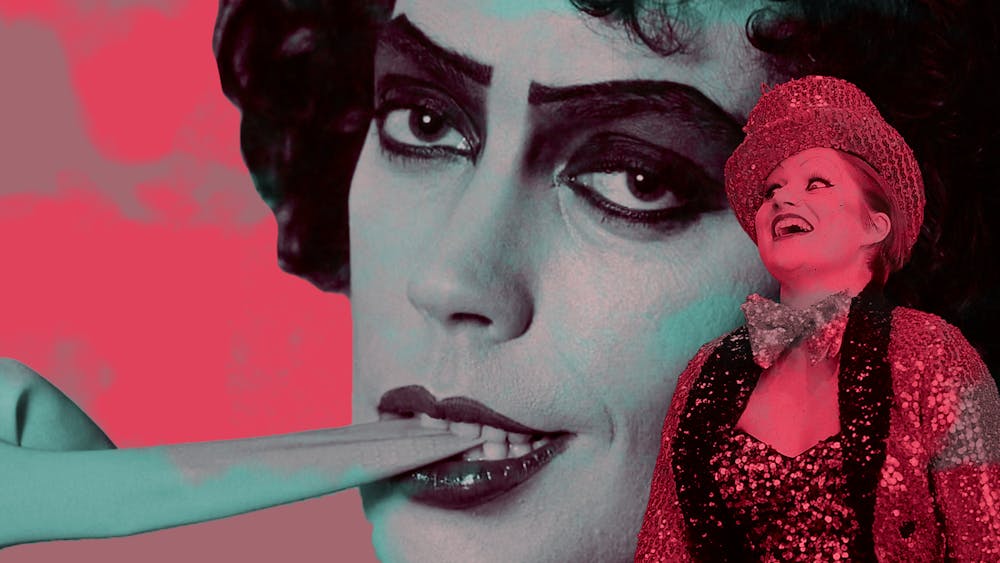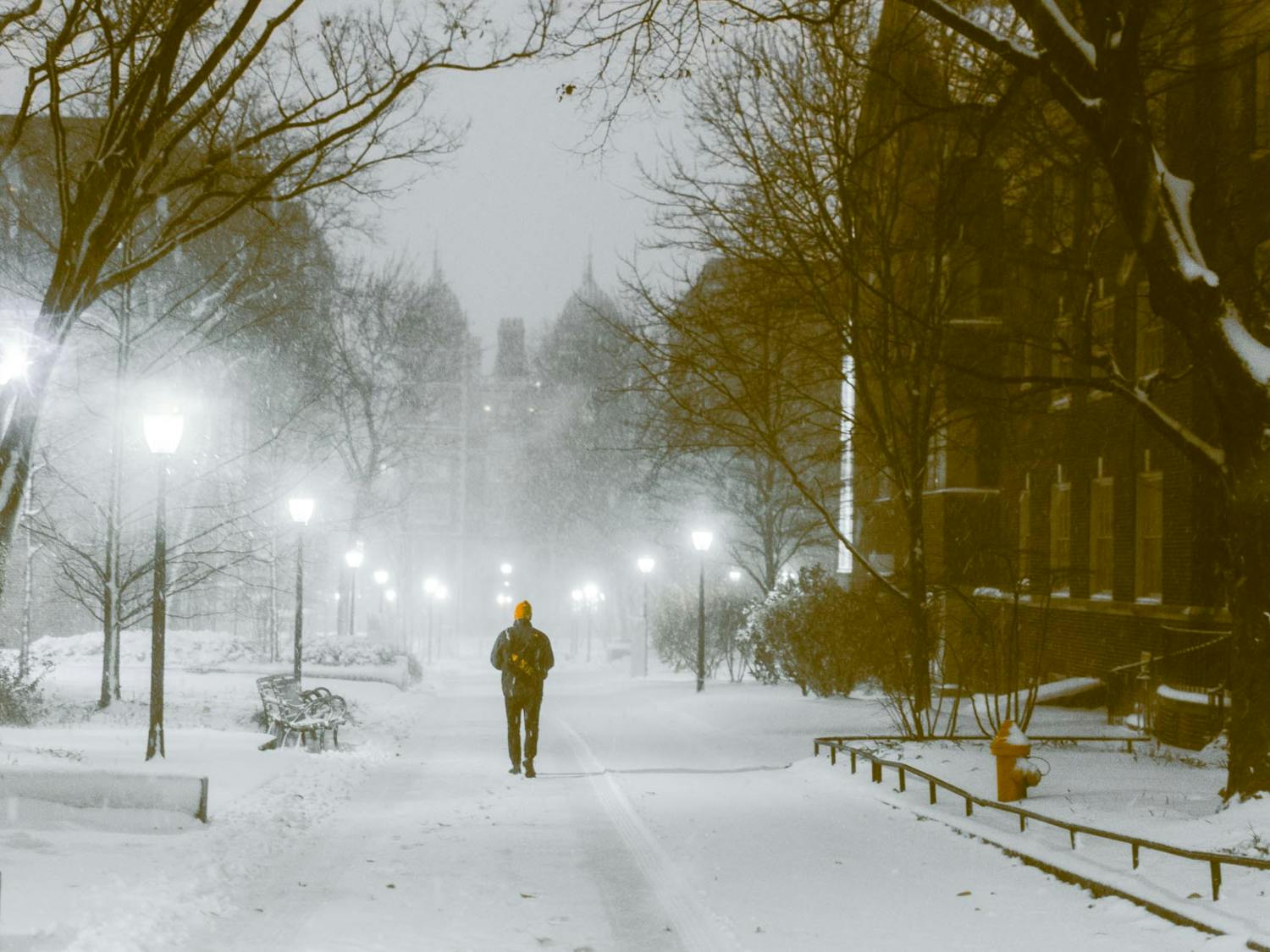Penn’s campus in the fall has an indescribable feel that sweeps through the green spaces, quiet off-campus blocks, and local coffee shops. The sporadic, cold gusts of wind and rapidly changing leaves are always a nice surprise that many who relocated to the northern United States, including me, are still not used to. However, something is still missing.
For the amount of glorification that autumn receives every year, the season feels hollow at Penn aside from the festivities of Halloweekend. The only campus-wide change that greets fall comes in the form of loosely organized trips to apple orchards and pumpkin-spiced feasts. Anything involving trips to the Eastern State Penitentiary for horror nights or shopping sprees at Spirit Halloween is left to the individual. I think it is time that Penn embraces the season and its customary traditions including one in particular: "The Rocky Horror Picture Show."
For anyone wondering what "Rocky Horror" — as it is usually simplified — means or involves, I would describe it as a tradition shared among college students for decades. "The Rocky Horror Picture Show" was a movie released in 1975 that quickly became a cult classic. The musically driven plot focuses around a vanilla couple, Brad and Janet, who seek shelter from a storm in a castle run by a scientist, Dr. Frank-N-Furter. During their stay, they bump into and sing along with a zany cast of personalities including the late Meat Loaf who plays the daredevil motorcyclist, Eddie. The story is by no means perfect, but nevertheless, the production is still a prime piece of camp pop culture that recirculates small theaters and performance halls every October.
Last Halloween, Rocky Horror made it onto box office charts 46 years after its initial release, and it will most likely do the same this year — but why? What makes a cheaply produced film better than others originating from the same era? Many fans and regular attendees already know the answer: the live performances. Unlike many modern screenings of classics like "Star Wars" or "Indiana Jones," "Rocky Horror" is typically performed by actors and screened in the background at the same time. You can watch the in-person performers or the 1975 classic at any point during the show. The reenactment is half of the audience’s enjoyment.
The other half of the fun is rooted in audience participation — something entirely unique to "Rocky Horror." Audiences are invited to sing along with the musical numbers or do the “Time Warp” dance. During the wedding scene, some throw rice; when the toast is made during the dinner scene, many throw toast; and whenever the narrator appears on screen, someone usually yells out, “Where is his neck?!” Rockyisms, audience call-and-response opportunities, have their own script for anyone watching with a loud enough voice, and those who do not want to shout above the rest of the room can always dress up as their favorite character. Everything participatory about the "Rocky Horror" experience is left up to the viewer. All they have to do is be present at the theater and ready to have a memorable night.
Despite the longtime legacy of "Rocky Horror" on South Street and at Temple University, no performing group or professional company offers "Rocky Horror" at Penn without the dreaded $14 Uber ride or logistics struggle that accompanies the typical midnight showings. By bringing Penn’s own spin on "Rocky Horror: to a fitting performance space — hopefully Iron Gate Theater’s gothic atmosphere — more interested students could engage in a crucial part of fall culture that colleges across the United States already have.
Performance arts groups would also reap the benefits of a localized and cheaply produced showing of "Rocky Horror." By counting on the viewership of Penn, Drexel, and the University City locals, small cast ensembles could enjoy a sizable profit by filling seats for a popular, annual event. "Rocky Horror" would be an important chance for the arts to mesh with Penn’s Halloween culture.
To ease the minds of Penn students, teachers, and general faculty, "The Rocky Horror Picture Show" should come to campus every October — traditionally midterm season. Since its debut almost half a century ago, the production has made a name for itself and become a family favorite that can be appreciated across generations. The impact of "Rocky Horror" can only make fall a more enjoyable season for every member of the community.
SEE MORE FROM C.H. HENRY:
C.H. HENRY is a College sophomore studying communication and theater arts from Nashville, Tenn. His email address is chhen@sas.upenn.edu.









